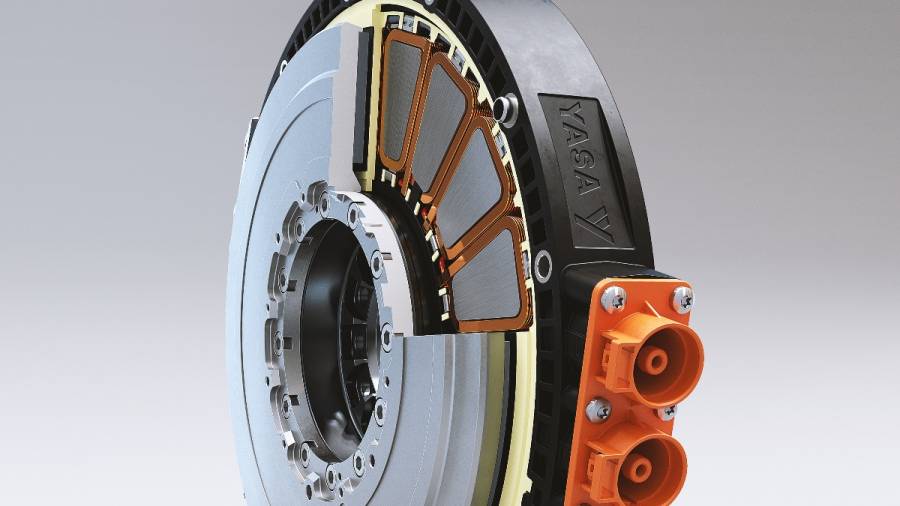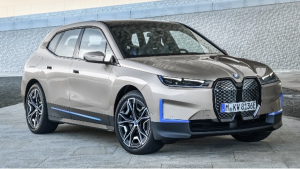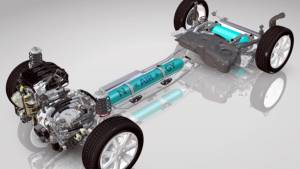Simple Tech: Advances in electric motor technology
Whenever we talk about electric vehicles, our focus is inclined toward developments of onboard battery technology. Naturally, better battery means greater range from the EV, which in turn improves the prospect of our buying one in future. Since it also means that EVs can carry more passenger and luggage while going farther on a single charge. However what we don't realise is that it is the electric motor (EM) which is driving our EVs, and developments and improvements to it would hugely add up to the benefits.
Electric motors are simplest of all the engines in the world. They have just one moving part, the shaft or rotor. It is usually cylindrical in shape and supported by just two bearings at the ends. This rotor is housed inside a casing (also known as stator) lined with windings or electrical coils. Rotor with end bearings rests on end covers to maintain small air gap between itself and stator windings. When alternating current (AC) supply is passed through stator, it produces rotating magnetic field. This field interacts with the rotor and forms a magnetic coupling with it to rotate it. However, different kinds of motors have different rotor designs and principle to rotate them also differs (read Simple tech: All about electric motors). This basic design is so reliable, that it has remained fundamentally unchanged over the last century.
Only in the past decade or two, developments have started taking place on EMs in the quest of eking out more from them. However, the fundamentals have still remained largely untouched. Instead, electronic trickeries like "variable frequency inverter drive" were strapped on it. This tech has already revolutionised so many industries as it tapped many unused benefits and potential from EMs in terms of efficiency and energy density (power to weight ratio). However, to keep up with the pace of development and demanding efficiency requirement of the future, EMs need to change structurally to meet those efficiency goals fundamentally, while taking help from electronics only where it is required, to remain future proof.
Good news is that the developments are here and it would be interesting to take a sneak peak at our very near future.
Basic challenge while developing a new-age EM is reducing the weight and dimension of the motor while increasing the useful power coming out from its shaft or rotor. A natural developmental progression these days. This means that, its packaging with the chassis will be much easier while it can accelerate faster while carrying more passenger and luggage under the same or smaller body shell. Also, it will be consuming lesser energy from the battery, thus it can go farther for the same battery pack, or can reduce battery pack size for same range.

One of the technologies making it possible is asymmetric motors (ASM). ASM, in simple terms, means an electric motor which is super efficient in motor mode, but not as good in performance during generator mode or regenerative braking; that is why the asymmetry. (Note: All electric motors work equally good as generators during coasting or braking). However, asymmetric motors show asymmetry in this regard because their rotor or shaft magnetic field is tuned in such a fashion as to provide around 14 per cent more power than a symmetrical motor of same weight in motor mode. Thus their power to weight ratio or energy density is higher, and that in automobile terms is music to our ears. This also means that motors are compact which makes it ideal for packaging, thus liberating space for more passengers and luggage in the chassis, while taking it farther from home on a single charge. However, their gain in motor mode translates into loss during generator mode, as they are not very good in sending electricity back to battery during regenerative braking, which is a small price to pay for the greater good. This motor is still under prototype stage while being developed under the roof of Karlsruhe Institute of Technology, Germany.
Next is Switched Reluctance Motor or SRM. What resistance is to current, reluctance is to magnetism. These motors are in many ways similar to brushless DC motors (or AC synchronous motors) found in majority of EVs, for example Hyunda Kona, Tata Nexon, MG ZS EV launched in India. Where SRM differs with brushless DC motors is in rotor design. Instead of permanent magnet or copper magnetic coils that latter is made of, SRM rotor is of solid salient pole design, generally made of laminated steel. Advantage of these motors is that their torque and speed can very easily be controlled by switching direction of magnetic field in stator by inverter drive, and that explains their name. Also they are much cheaper compared to brushless DC motors whose rotors are made of rare earth material for magnets which are expensive and delicate. Yet SRM can deliver almost similar performance at much cheaper price. Due to solid rotor design, these motors are compact and light weight in design, the benefits of which you already know by now. These motors are found in Toyota Prius and Tesla Model 3 and gaining popularity as we speak.
Next is axial flux motor. This is again a compact, high power density motor. In fact their design is unusual for any conventional motor in the sense that they look like a large disc, rather than a cylinder what we are used to seeing. These are called axial flux motor because the magnetic flux (magnetic waves or magnetic lines of force) from their stator are produced along the axis and not radially, as in conventional EMs. That is so because stator is disc shaped, and is sandwiched between two disc shaped permanent magnet rotors. This provides motor with high level of compactness while giving greater output at rotor, which are two in numbers now. Also by the virtue of design, the magnetic interaction between stator and rotors is much more efficient, making this motor three to five times more energy dense than conventional motors. These motors are ideal for use in applications like electric two-wheelers, electric aircrafts and the likes, where space is a major constrained, but demand for power is higher.
Also read,
Simple Tech: The new high voltage dawn for EVs
Starts Rs 22 Lakhs
-NA-
Automatic
176.75
280
-NA-
Starts Rs 6.95 Lakhs
1497cc
Automatic
110
260
21.5 Kmpl
-NA-
-NA-
503
660
-NA-














